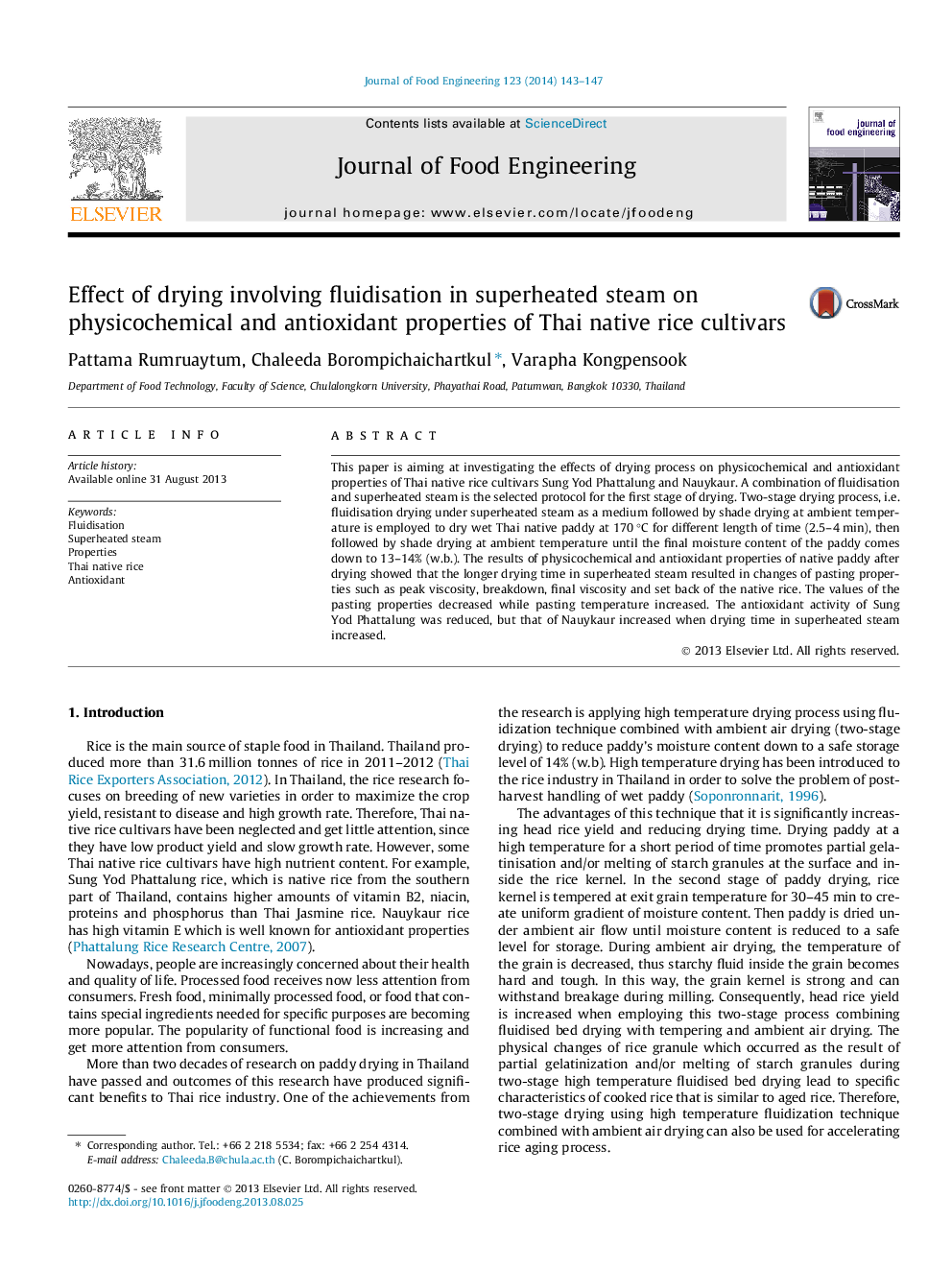| Article ID | Journal | Published Year | Pages | File Type |
|---|---|---|---|---|
| 223216 | Journal of Food Engineering | 2014 | 5 Pages |
•A combination of fluidisation and superheated steam drying followed by shade drying at ambient temperature was used.•Drying temperature at 170 °C at varied times of 2.5–4 min have impact on physiochemical properties of Thai native rice.•The longer the drying time in superheated steam drying resulted in increasing of % V type crystallinity.•Increasing the drying time in superheated steam resulted in changes of antioxidant activity of Thai native rice.•The changes of antioxidation activity are also depending on variety of Thai native rice.
This paper is aiming at investigating the effects of drying process on physicochemical and antioxidant properties of Thai native rice cultivars Sung Yod Phattalung and Nauykaur. A combination of fluidisation and superheated steam is the selected protocol for the first stage of drying. Two-stage drying process, i.e. fluidisation drying under superheated steam as a medium followed by shade drying at ambient temperature is employed to dry wet Thai native paddy at 170 °C for different length of time (2.5–4 min), then followed by shade drying at ambient temperature until the final moisture content of the paddy comes down to 13–14% (w.b.). The results of physicochemical and antioxidant properties of native paddy after drying showed that the longer drying time in superheated steam resulted in changes of pasting properties such as peak viscosity, breakdown, final viscosity and set back of the native rice. The values of the pasting properties decreased while pasting temperature increased. The antioxidant activity of Sung Yod Phattalung was reduced, but that of Nauykaur increased when drying time in superheated steam increased.
